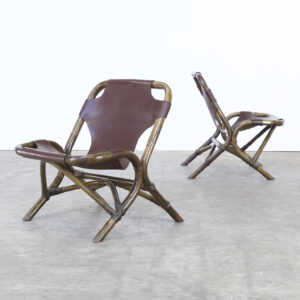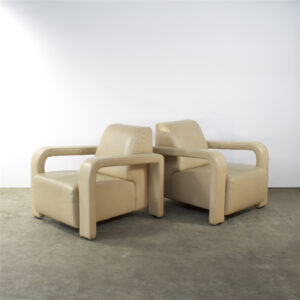70s Mart Stam bauhaus stool set/4
€780.00
Mart Stam was a famous proponent for New Objectivity, a German cultural movement advocating for a return to unsentimental reality. He was a pioneering Dutch modernist architect-designer (1899-1966).
Born in North Holland in 1899, Martinus Adianus “Mart” Stam earned a degree in drawing from the Royal School for Advanced Studies in Amsterdam (1917-19). After graduating, he moved to Rotterdam to work as a draftsman in the architectural office of Marinus Jan Granpré Molière (1883-1972), whose mentoring had a lifelong impact on Stam’s career.
In 1922, Stam won the right to design an urban plan concept for The Hague. Stam’s designs included roads that ran perpendicular to the beach, a novel concept that had yet to be seen. Later that year, Stam moved to Berlin and worked together with architect Max Taut (1884-1967) and Russian avant-garde architect El Lissitzky (1890-1941)—who became a lifelong friend—on various projects. During this time, Stam began developing his signature “New Objectivity” style.
The Bauhaus school was founded on sober but idealistic principles, which resulted in designs characterized by reduced forms and new materials. Turning away from expressionism, proponents of New Objectivity rejected romantic idealism in favor of realism, rationality, and order.
Stam worked alongside the likes of Le Corbusier, Ludwig Mies van der Rohe, Peter Berens, Bruno Taut, Hans Peolzig, and Walter Gropius. He unveiled his first set of cantilevered chairs, which would spark a whole new genre of like-minded designs. Stam’s S33 and S34 Chairs (both 1926) utilized bent tubular steel, which was thought to be the material of the future during the heyday of the modernist era. These chairs revolutionized modern furniture, as the robust nature of the tubes facilitated minimalist yet durable designs. The chair also resulted in a copyright feud between Stam and Marcel Breuer, which Stam won. Thonet put Stam’s cantilevered chair designs in production in 1932.
Throughout his career, Stam held many acclaimed positions, including the editor of the avant-garde magazine ABC—Contributions to Building, the head of the Academy of Arts & Crafts in Amsterdam, and the director of the Conservatory for Applied Art in Berlin-Weißensee. After a short stint living in Amsterdam, he moved to Zurich and retired in 1966. Stam passed away later that year at the age of 86.
This set of four bent tubular chrome stools are in good condition consistent with age and use.










